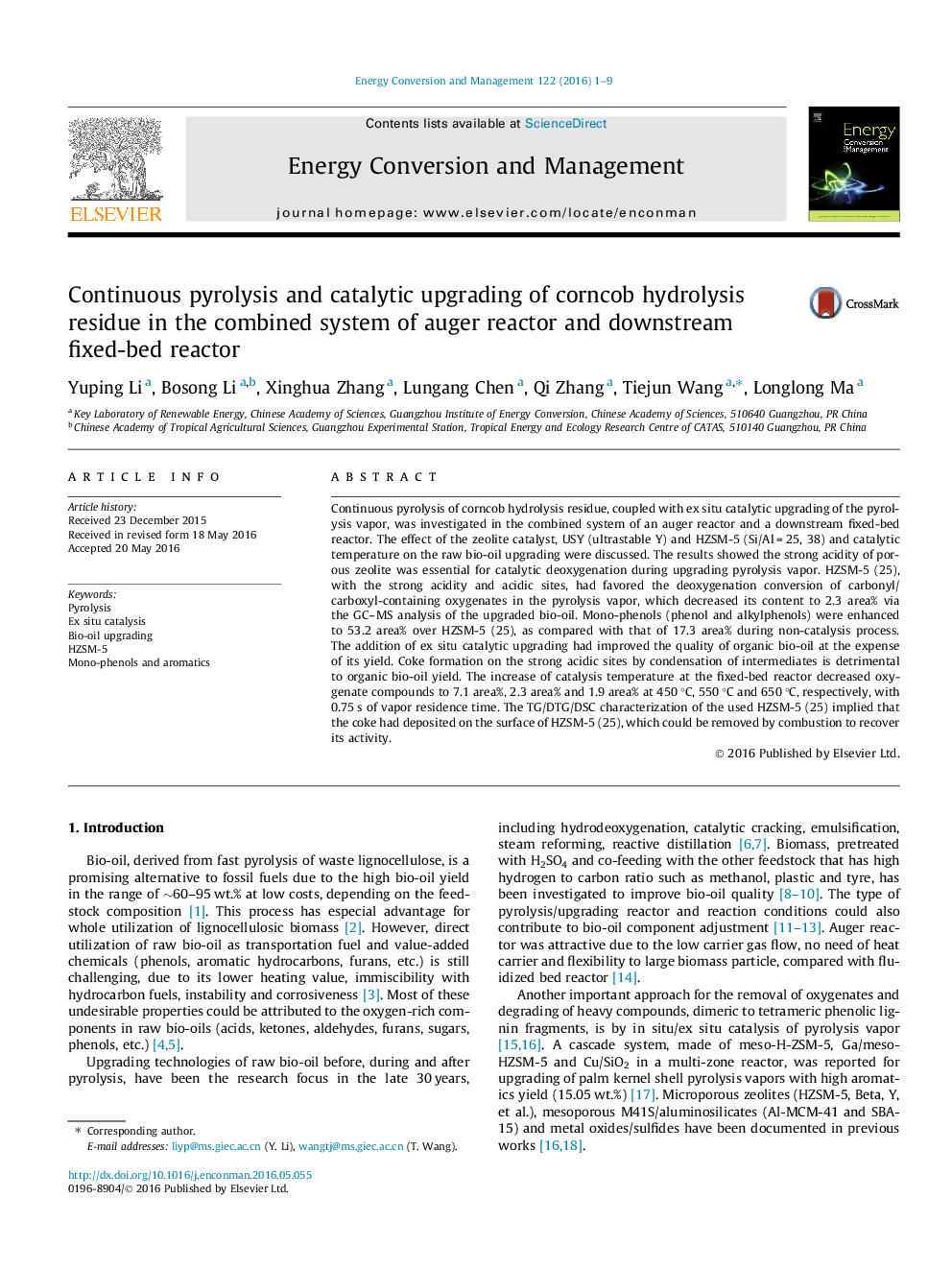| Article ID | Journal | Published Year | Pages | File Type |
|---|---|---|---|---|
| 7160340 | Energy Conversion and Management | 2016 | 9 Pages |
Abstract
Continuous pyrolysis of corncob hydrolysis residue, coupled with ex situ catalytic upgrading of the pyrolysis vapor, was investigated in the combined system of an auger reactor and a downstream fixed-bed reactor. The effect of the zeolite catalyst, USY (ultrastable Y) and HZSM-5 (Si/Al = 25, 38) and catalytic temperature on the raw bio-oil upgrading were discussed. The results showed the strong acidity of porous zeolite was essential for catalytic deoxygenation during upgrading pyrolysis vapor. HZSM-5 (25), with the strong acidity and acidic sites, had favored the deoxygenation conversion of carbonyl/carboxyl-containing oxygenates in the pyrolysis vapor, which decreased its content to 2.3 area% via the GC-MS analysis of the upgraded bio-oil. Mono-phenols (phenol and alkylphenols) were enhanced to 53.2 area% over HZSM-5 (25), as compared with that of 17.3 area% during non-catalysis process. The addition of ex situ catalytic upgrading had improved the quality of organic bio-oil at the expense of its yield. Coke formation on the strong acidic sites by condensation of intermediates is detrimental to organic bio-oil yield. The increase of catalysis temperature at the fixed-bed reactor decreased oxygenate compounds to 7.1 area%, 2.3 area% and 1.9 area% at 450 °C, 550 °C and 650 °C, respectively, with 0.75 s of vapor residence time. The TG/DTG/DSC characterization of the used HZSM-5 (25) implied that the coke had deposited on the surface of HZSM-5 (25), which could be removed by combustion to recover its activity.
Keywords
Related Topics
Physical Sciences and Engineering
Energy
Energy (General)
Authors
Yuping Li, Bosong Li, Xinghua Zhang, Lungang Chen, Qi Zhang, Tiejun Wang, Longlong Ma,
